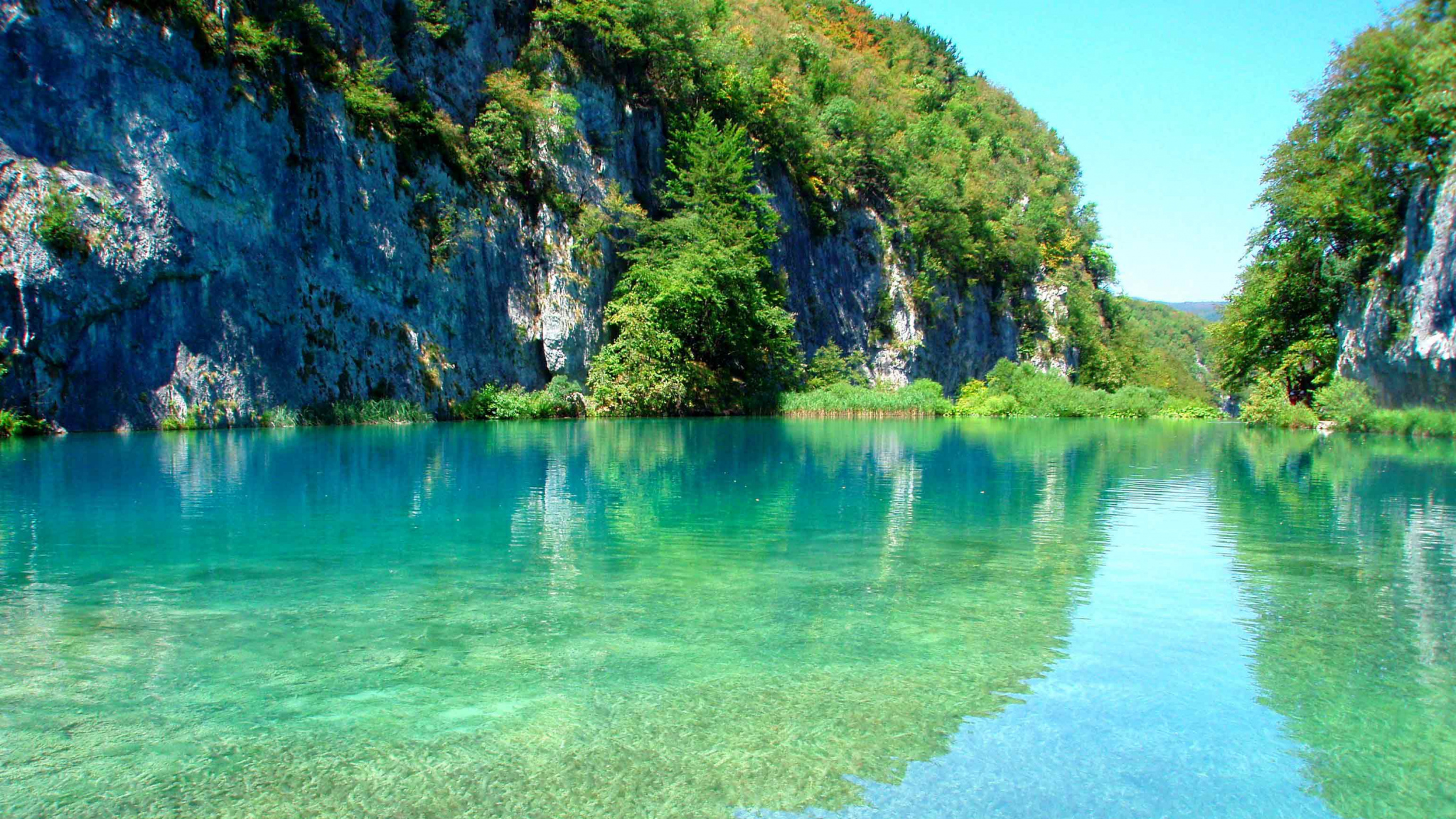What was this creature?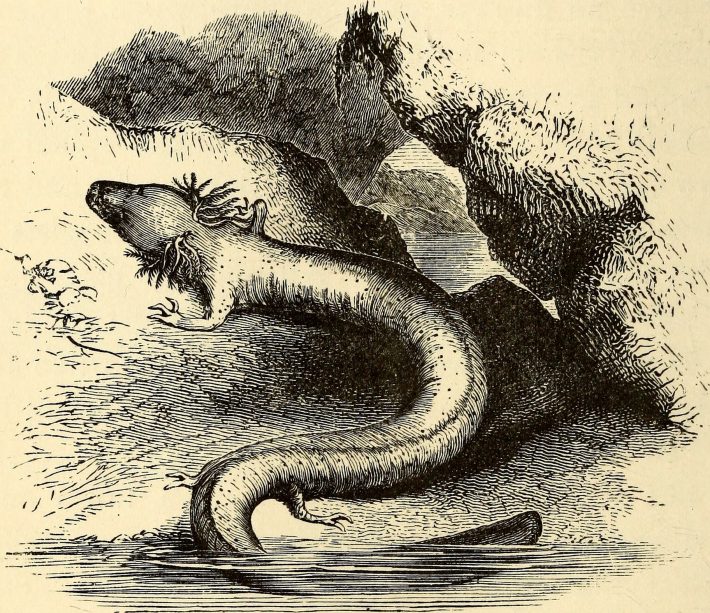
But what the divers had found was not an eel, and it was a long shot from even being called a “dragon.” In actuality, it was a single ‘olm’ (Proteus anguinus). An olm is a rare salamander species that share a close likeness to eels in their appearance, save for the tiny limbs protruding from its body. Just one look at it can confirm how they can be mistakenly identified as “baby dragons.” The existence of these creatures was first confirmed when Valvasor described them in the 17th century.
It was actually an ‘olm’!
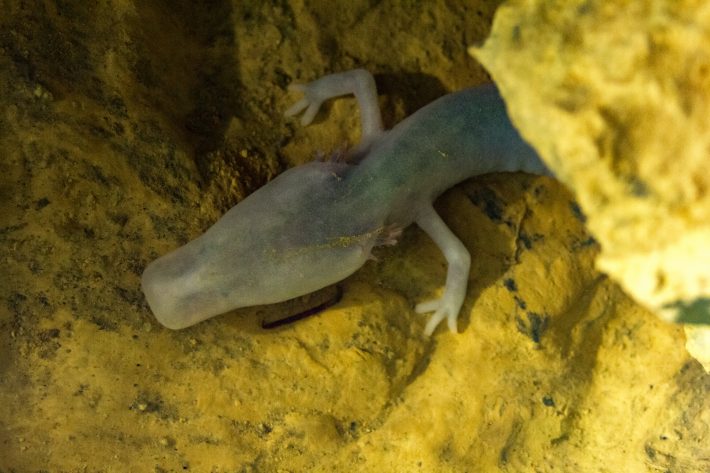
Because of their pink hue of their skin, olms have also been referred as “human fish”. They can grow up to 16 inches. With their handy gills, they breed and spend almost their entire lives underwater. Because of this, they possess sensory organs that allow them to survive and thrive in their dark habitats. They’re actually almost completely blind, and actually, have a layer of skin over their eyes because of the futility of the organ.
What exactly was this weird creature?
Olms get on just fine despite the amiss visual sense, though. They can find organic compounds in the water with their mouths and noses and can hear noises and vibrations from long distances. They even have special organs to help them sense electromagnetic fields!
The amazingness of olms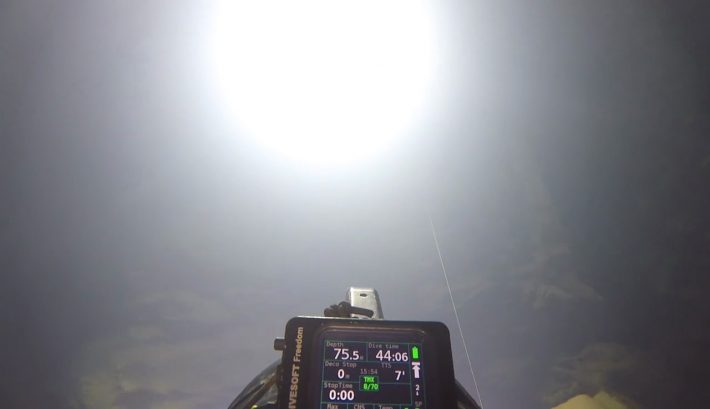
Amazingly, olms are noted to be able to live up to 100 years! Their prey is largely made up of crabs, insects, and snails. But in actuality, they can survive for as long as 10 years without any food! They’re built in a way that they are able to lower their metabolic rate and store lipids and glycogen. They can survive at remarkably deep depths and pressures too.
They can withstand great pressures!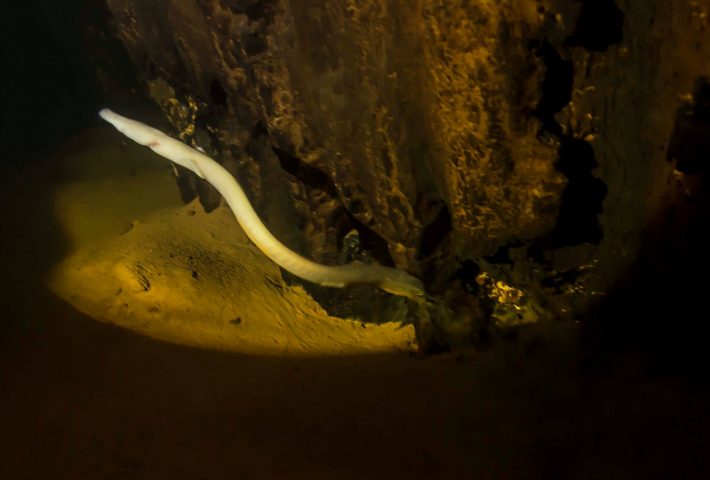
“Study of the olms in greater depths is extremely important, especially when done by divers focused on conservation,” said Gregor Aljančič, biologist and Tular Cave Laboratory head. “Our previous findings indicate that Proteus can withstand significant pressure.”
The precautions they had to take for their journey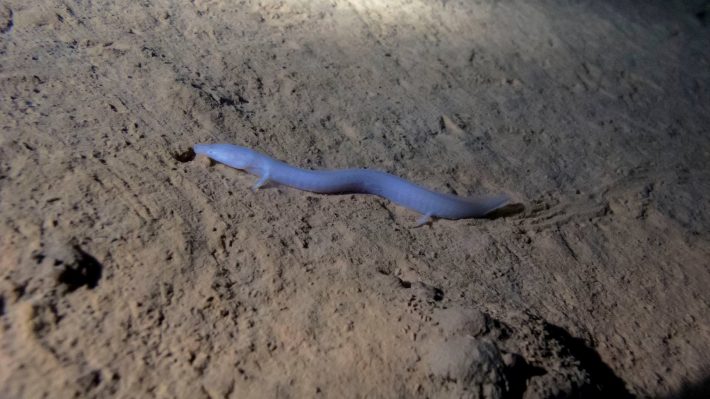
Furthermore, the “dragons” that these dragon hunters were looking for in Zagorska peć were found at a record depth of 370 feet! That’s three times deeper than the stipulated depth for a safe and “recreational” dive. In fact, the divers had to use hypoxic air tanks to offset the risk of oxygen toxicity and nitrogen narcosis.
